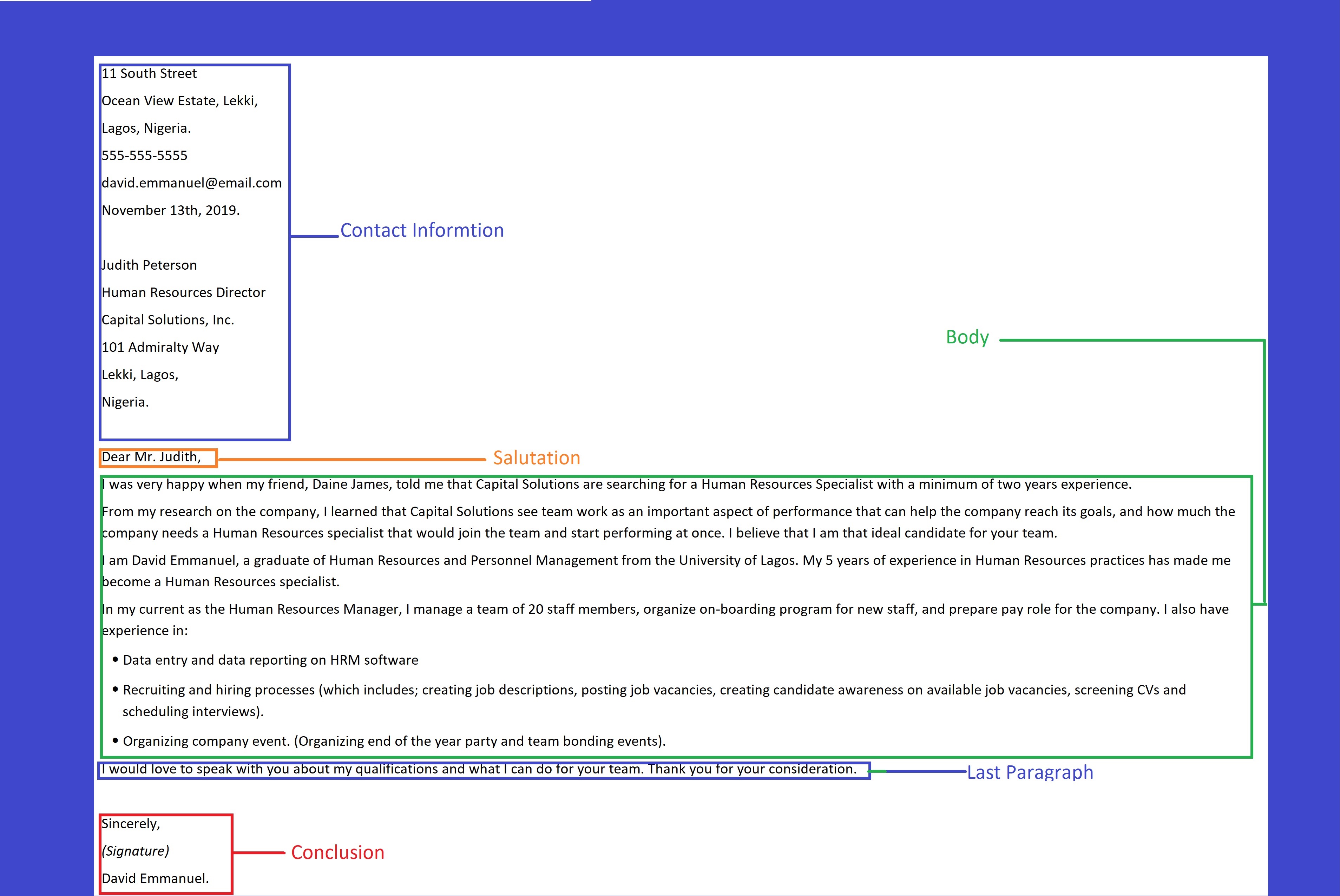
How do you write an application letter that can get you the job you desire?
Many job seekers don’t always see the reason why they should write an application letter when they are applying for a job because they feel they can just send their CVs.
Your CV indeed contains all the necessary information that the recruiter needs to know about you, but sometimes your CV alone may not be able to do the job of helping you land the job of your dreams.
Your CV may do a great job of showing that you have the skills and education required to excel in a particular position, but it may not be great at telling your prospective employer that you are the best person for the job.
This is what an application letter does for you. An application letter expresses your interest in a job and shows the employer why you are the best person for the position. Writing an application letter is one of the hidden job search hacks that help you apply for fewer jobs, but land more interviews.
If you are tired of getting rejected every time you apply for a job vacancy, then you should consider writing an application letter that will help you express your sincere interest in the job of your dreams. In this article, we will be looking at:
A job application letter is a formal document that is sent to a prospective employer to express your interest in a position. An application letter is usually sent alone and not attached alongside another document.
Most times, an application letter is not sent after you must have seen an advertised position but sent whether or not a vacancy was advertised. The application letter serves a purpose that is similar to that of the CV.
Yes, it is true that you should write an application letter when you are interested in a job, but that is not all you consider before you decide to write an application letter.
When you see a job advert that you are interested in, you send your CV and cover letter, right? But this does not quite work for application letters. Employers will not replace the CV and cover letter with an application letter.
The approach of an application letter is different from the CV and the cover letter. You should write an application letter when the employer does not solicit your interest in the position. This simply means when there is no job advertisement or posting.
For example, if you are searching for a job and you have a list of top companies that you would love to work for, you don’t necessarily have to wait for a job posting to declare your interest in that particular job. You can simply email an application to different companies.
This is a way for you to extensively and formally introduce yourself to the prospective employer of the companies that you would love to work for.

Just like we have discussed earlier, there are many reasons why people write application letters. If you are actively searching for a job, then this is why you should consider writing an application letter:
Many people use the terms application letter and resume letter interchangeably because they think that they mean the same thing. Even though the application letter and the cover letter perform almost the same function, they are different.
These tips will guide you on how you can write an application letter:
Are you applying for a security job, but don't know how to write an application letter? Read how to write an application letter for a security job in Nigeria
1. Write an Outline: Just like you write an outline when you want to write an essay, it is also important that you write an outline when you want to write your application letter. The outline is the structure of what you want to write in your actual application letter. It is good that you make clear what you want to achieve, and all the things that you want your prospective employer to know.
An outline of your application letter will make it easy for you to write your application letter because you have the structure planned out already.
2. Write a Draft: After you must have done a structure for your application letter, then it is good for you to do a rough draft of the application letter before writing the original one.
When you are drafting your application letter, you can make use of the outline that you did earlier to serve as a guide for your application letter. At this point, you may not worry about grammatical mistakes and punctuation errors. This is to help you develop a prototype application letter.
3. Salutation: Salutation is one aspect of the application letter that is obvious. Most times that is what the employer will likely see first as soon as they open the letter. Since this is an important aspect of the application letter, you need to be careful.
It is important for you to know some tips on salutation before you start writing your application letter:
4. Tone: Employers can sense your tone from the way that you write. When you are writing your application letter, you must treat the recipient with respect. Be polite and use formal language when you are writing. Be careful not to use slang or ambiguous words.
5. Be Brief: As much as you need to give your prospective employers reasons why you think you are the best person for the job, it is equally important for you to as brief as possible.
Employers are very busy and may not be able to spend time reading your application letter. Mention the purpose of your letter in the first paragraph because this is where the employer will likely look at first.
6. Tailor the letter to the job and the company: Tailoring your application to the job that you are applying for and the company will give your prospective employer the mindset that you are passionate about the job and the company.
Employers look forward to hiring people that are passionate about the job. Tailoring your application letter may be all you need to land the job of your dreams.
7. Use typed and not handwritten documents: Unless a handwritten letter is requested, you should send a typed and computer-generated document. Typing your document will help you present a well-aligned, clear, and easy to read the document.
8. Use a high quality Paper: If you are sending a hard copy application letter, make sure you use a good and quality paper. Don’t tear out a sheet of paper from your notepad and use that paper to write your application letter. If you do that, your application letter will look scrappy and rough.
9. Proof-reading: proof-reading your application letter will help you see errors that you would need to fix before you send your application letter. You can read your application letter out loud to yourself to see some errors.
Check the spellings on your application letter and punctuation errors. You can use Grammarly.com to check your spellings and edit your errors.
10. Ending your application letter: When you are sending your application letter, you should make sure that your tone matches the tone of the letter. A formal letter closing is polite, courteous, and respectful.
These are common closing that you can use to end your application letter:

Writing an application letter can be easy and straight forward if you follow some rules. From salutation, closing, to the overall organization of your letter some rules makes your application letter appear good.
Your application letter should begin with the contact information. The contact information should include your contact and that of the employer.
The contact information should include; name, address, phone number, email, and date. If it is an email application letter, you can put your contact at the end of the letter after your signature.
The heading of your application letter includes the contact information and the salutation.
(Your contact information)
City, State Zip Code
(The employer’s contact information)